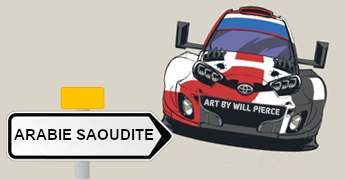Dashboard warning lights are an important part of modern car design, providing drivers with real-time information about the status of different vehicle components. Understanding these warning lights is critical for Volvo, a company known for its dedication to safety and innovation in engineering. These signs can help prevent small concerns from becoming major problems, ensuring your vehicle’s safety and durability. This tutorial will go over the numerous warning lights on a Volvo dashboard, what they mean, and what steps to take when they appear.
General Overview of Dashboard Warning Lights
Color Coding
The Volvo dashboard warning lights are color-coded to show the severity and urgency of the issue.
Red Lights: Red lights indicate a significant condition that demands quick action. Ignoring a red light can result in substantial damage or safety issues.
Yellow Lights: Yellow or amber lights signal a probable problem or something that needs to be checked quickly. While not as important as red lights, they should be noticed briefly.
Green/Blue Lights: These are informative lights that indicate whether a system is operational or running correctly.
Common Symbols
Understanding the symbols and their significance is critical. Here are some frequent ones you could see in a Volvo:
Engine Light: Indicates a problem with the engine or emissions system.
Oil Pressure Light: It indicates low oil pressure.
Battery Light: The battery light indicates a problem with the charging mechanism.
Brake System Light: Alerts you to problems with the braking system.
ABS Light: Refers to the anti-lock braking system.
Airbag Light: The Airbag Light indicates a problem with the airbag system.
Tire Pressure Monitoring System (TPMS) Light: It indicates that there is an issue with tire pressure.
Detailed Explanation of Volvo Dashboard Warning Lights
Engine Management Light (EML)
Symbol: An outline of an engine, usually with the word « CHECK » underneath it.
Meaning: This light comes on when there is a problem with the engine or emissions system. It might be caused by many factors, ranging from a loose gas cap to more significant concerns, such as a defective oxygen sensor or catalyst converter.
Action: If this light comes on, check for any obvious problems (such as a loose gas cap). If the light remains, arrange a diagnostic check with a Volvo service center to diagnose and resolve the issue.
Oil Pressure Warning Light
Symbol: an oil can with a drop.
Meaning: This light shows that the oil pressure is too low, which can cause significant engine damage if not treated immediately.
Action: As soon as it is safe, stop the car and check the oil level. If the oil level is low, use the suggested kind. If the light stays on after adding oil or the oil level is acceptable, get expert help immediately.
Battery/Charging System Warning Light
Symbol: The battery symbol.
Meaning: This light indicates a problem with the vehicle’s charging system, which might be a defective alternator, battery, or wiring.
Action: Inspect the battery terminals for corrosion or loose connections. If everything looks okay, have a professional evaluate the charging system to keep the battery from dying altogether.
Brake Warning Light
Symbol: An exclamation mark inside a circle, commonly accompanied by the phrase « BRAKE. »
Meaning: This light may signal a variety of braking system difficulties, such as low brake fluid, worn brake pads, or a fault with the braking system.
Action: Check the brake fluid level and fill it up if needed. If the light remains or you observe any changes in braking ability, get the brakes tested right once.
Anti-lock Braking System (ABS) Warning Light
Symbol: The letters « ABS » within a circle.
Meaning: This light indicates an issue with the anti-lock braking system, which may impair the vehicle’s ability to prevent wheel lockup during harsh braking.
Action: The brakes should still work. However, the ABS may not. Check the ABS system as soon as possible to guarantee optimal braking performance.
Airbag Warning Light
Symbol: A person with an airbag deployed in front of them.
Meaning: This light signifies a malfunction in the airbag system that may stop the airbags from deploying in a collision.
Action: Do not disregard this light. Schedule a service appointment to have your airbag system tested and repaired to ensure your safety in the event of an accident.
Tire Pressure Monitoring System (TPMS) Light
Symbol: An exclamation mark within a horseshoe-shaped symbol.
Meaning: This light indicates that one or more tires are substantially under or overinflated.
Action: Check the tire pressures using a tire gauge and inflate them to the levels specified in the vehicle’s owner handbook or on the driver’s side door jamb. If the light stays on after changing the pressure, there may be an issue with the TPMS that requires expert attention.
Coolant Temperature Warning Light
Symbol: A thermometer submerged in liquid.
Meaning: This light signifies that the engine has overheated.
Action:
1. Stop the car as soon as it is safe and let the engine cool down.
2. Check the coolant level and add extra if necessary.
3. If the light remains or visible steam or coolant leaks, get expert assistance immediately.
Power Steering Warning Light
Symbol: A steering wheel with an exclamation point.
Meaning: This light indicates an issue with the power steering system.
Action: The car may become challenging to steer, particularly at low speeds. Check the power steering fluid level and add additional as needed. If the light remains on, have an expert examine the system.
Electronic Stability Control (ESC) Warning Light
Symbol: An automobile with wavy lines underneath it.
Meaning: This light indicates an issue with the vehicle’s electronic stability control system.
Action: While you can continue driving, the car may not perform as well in slick weather. Get the ESC system examined as soon as feasible.
Engine Coolant Level Warning Light
Symbol: A liquid container with a thermometer inside.
Meaning: This light shows that the engine coolant is low.
Action: Check the coolant level and fill it out if needed. Check the cooling system for leakage or other problems if the light stays on.
Diesel Particulate Filter (DPF) Warning Light
Symbol: A rectangle emblem with dots within that depict soot particles.
Meaning: This light indicates a problem with the diesel particulate filter intended to decrease soot emissions.
Action: Follow the recommendations in the owner’s handbook, which may involve driving at a specific speed for a set amount of time to allow the filter to regenerate. If the light stays on, expert service may be necessary.
Lane Departure Warning Light
Symbol: An automobile straying out of its lane.
Meaning: This light shows that the lane departure warning system is activated and has detected an unexpected lane departure.
Action: Adjust your steering to stay in the lane. If the light remains on for no apparent reason, have the system examined.
Low Fuel Warning Light
Symbol: A gas pump icon.
Meaning: This light indicates that the gasoline level is low, and you should refuel soon.
Action: Refuel the car as soon as possible. Ignoring this light may result in running out of gasoline, which might harm the fuel pump.
Parking Brake Warning Light
Symbol: A « P » inside a circle, representing an automobile with the brakes pressed.
Meaning: This light shows that the parking brake is applied.
Action: Before you start driving, release the parking brake. If the light stays on after you release the brake, get it examined by a professional.
Auto Hold Indicator Light
Symbol: The letter « A » within a circle.
Meaning: This light shows that the auto hold feature is activated, which keeps the car still without requiring the driver to maintain their foot on the brake.
Action: This is usually merely an informative light. However, if the light blinks or acts strangely, get it examined.
Conclusion
Understanding Volvo’s dashboard warning lights is critical to maintaining your vehicle’s safety, performance, and dependability. Each light functions as an early warning system, alerting you to possible problems before they become big ones. Regular maintenance and fast attention to these warning lights help keep your Volvo in shape, ensuring a safe and comfortable driving experience.
Always consult your vehicle’s user handbook for particular information about your model, and don’t be afraid to seek expert help when necessary. By remaining educated and proactive, you can extend the life and efficiency of your Volvo.



